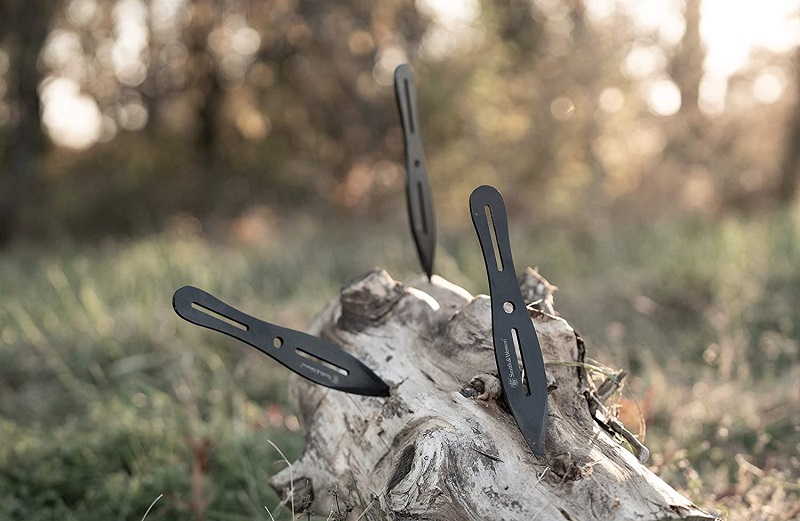Are you wondering How To Throw A Throwing Knife? do not worry we at BestDamascusKnife giving you guidance on How To Throw A Throwing Knife. Knife throwing is a tradition that has been approximately for centuries. It is a pleasant, and simple to learn art whose fame is inventing a recovery. Nothing’s added impressive than the sound of a knife hitting a point from steps away. Knife throwing can be done with anything from a hunting knife to real throwing knives. In this article, you will learn secure and reliable techniques of knife throwing.
Your choice of knives is unlimited. Any knife with a semi-sharp point and a lightweight will work but hold in mind several knives need distinct techniques. Throwing a hunting knife does not utilize the identical grip as throwing a real throwing knife. I will go beyond the variation in technique succeeding on, but for instantly let us simply go throughout your house, cabin, local store, or shed to get some knives.
Picking a throwing knife and target
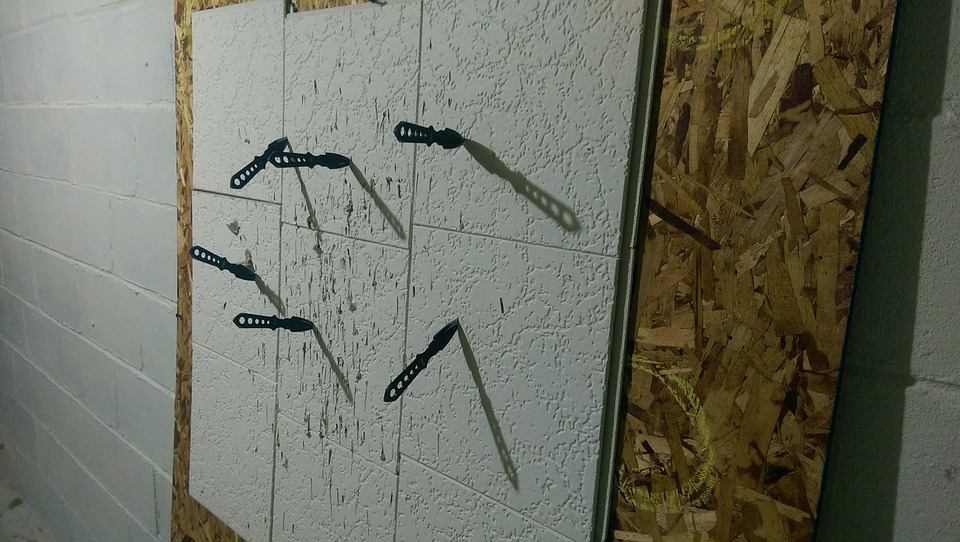
Picking a throwing knife and target
Before you start, you require a knife, but not simply any knife will do it. You necessitate a knife particularly intended for throwing. Some throwers make their knives, but this is an exceptional look of the game to be explained later.
An excellent throwing knife will have the following features:
- It will have Dull edges
- The knife will have a Sharp point
- It will have Rounded corners
- It will have Thick enough the tip will not bend on impact
- Least perforations or cut-outs in the design
- It will have No fancy grips or handles
- The knife Weigh at least 10 to 12 ounces
- It should be at least 12 inches long
As a newcomer, you should go for simple designs without decorations. If there is not a store near you that sells throwing knives, you can get lots of knives online at affordable prices in all shapes and sizes normally in groups of three. Hold in mind, as you pick your knives, that you are watching for something that holds the proper weight, length, and seems that it will stick in your target when thrown.
The go-to target material for knife throwing is wood. If you do one by yourself, seek to get about a part of a long log (this would be perfect). Though, in the state you can not do that, check out these other approaches:
- Planks – The wood planks will serve nice if that is what you have setting nearby; the more comprehensive, the more satisfying.
- Lumber yards – Examine with your neighborhood lumber yard and see if you can claim any log pieces they might usually throw away.
- Firewood dealers – Review classifieds for restricted sources of firewood. This can be a poor, and seldom free, solution.
- Friends – People cut down trees each day. You could be the answer to someone else’s problem.
The most suitable varieties of wood are softwoods like Cottonwood, Pine, or Poplar. Your knives will hold in them more comfortably as the wood is soft. A knife will jump off of hardwoods like Oak, and plywood which is why they are a poor choice except you are utilizing tiny knives.
Purposes of knife throwing and fundamental safety
The most fundamental purposes of knife throwing are correctness and the stick. These objects can be achieved by modifying your distance from the victim and the throwing method you prefer to use. The next aim to attempt is consistency. Prepare your methods continuously you are accurate more times than non. Then you can try distinctive techniques and knives to expand your abilities.
Throwing carefully is usually about common sense: do not try to attempt shoeless. Take time to go by some smart protection plans before you begin. These are a safe area to begin:
- Train aside from people and pets
- Fixed your target aside from houses, cars, gas grills, etc.
- Let anyone in the neighborhood know what you are doing and where
- Give consideration
- Use proper tools
- Take a kit with a file to eliminate burrs from your knives, tweezers for splinters, and a cloth to clean both your knives and your hands
Throwing posture and knife grip
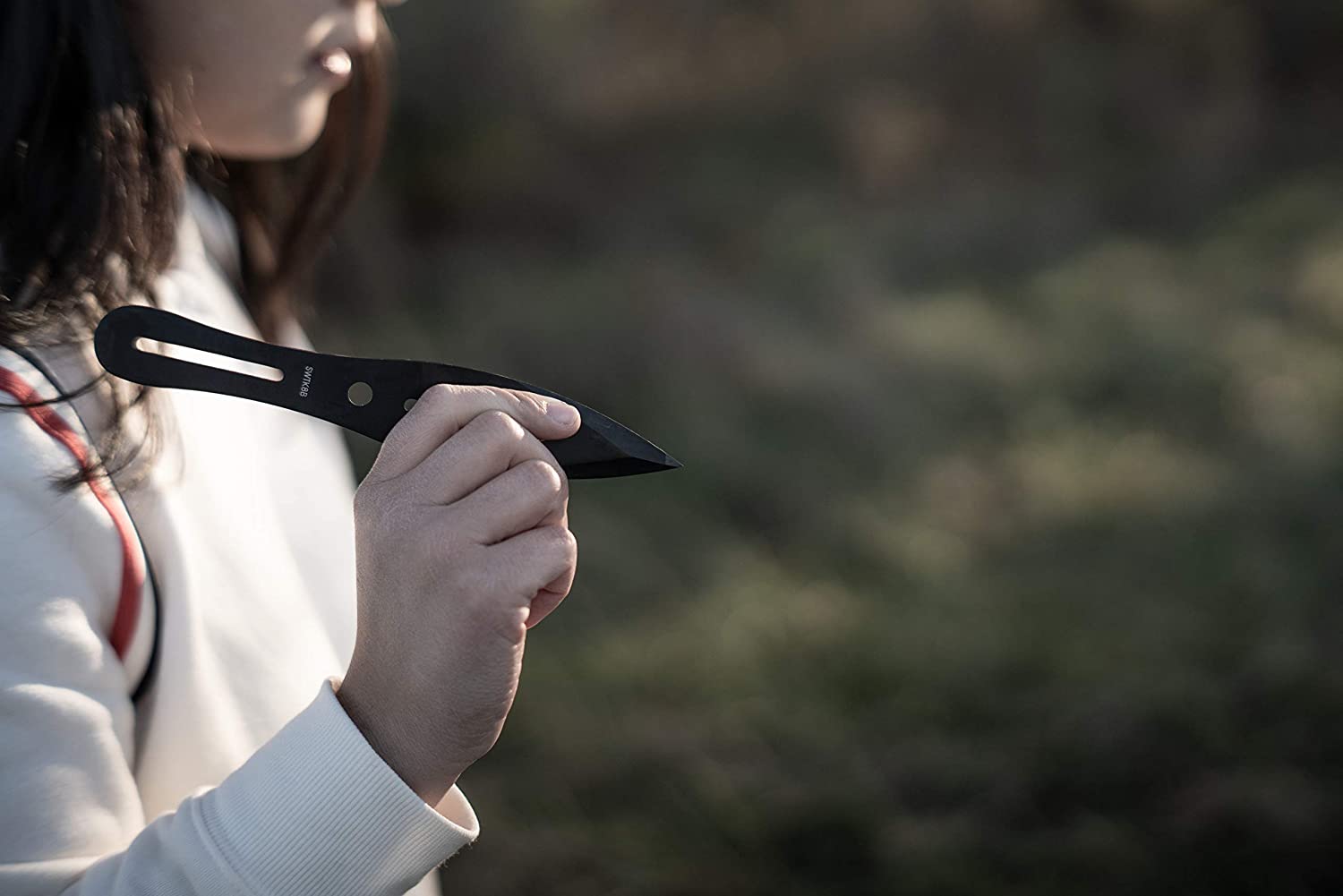
Throwing posture and knife grip
With various sports, there is a specific order to prepare to be good and knife throwing is no limitation. As you prepare your position, be careful of your footing and your position – this will support you learn knife throwing methods extra fast.
Here are the foremost components of a good throwing position:
- A relaxed body. This is not minding medicine and should relieve anxiety rather than build it
- Standing up straight for a more reliable, more precise, throw
- Put your right foot ahead with the left foot insignificantly back or the other method throughout for lefties
Attempt it out and be easy with your posture. Be relaxed and untroubled, but concentrated. You should attempt throwing a ball at your aim while preparing your posture till it feels real. There are two methods to throw a knife: by the handle or by the blade and the method is determined by the knife. Hold the knife and decide which end is the heaviest as you will need to throw the heavy end beginning to do more extra force going into your target.
Once the handle end is defined, take the knife with your index, middle, and ring finger with your thumb on the opposing side. Place your thumb and fingers in the middle of the knife and near the end so that your pinky hangs off and simply waves with your hand. If this grip does not feel real or work properly for you, do some of the bellow variations while training your throwing.
- Hammer grip – Hold the knife in a horizontal adjustment. Grasp it with your whole hand like you would the handle of a hammer. Hold your thumb in the middle on the side.
- McEvoy grip – Hold the knife in a perpendicular adjustment. Grasp it with your whole hand like a hammer and relax your thumb on the topmost edge.
- Pinch grip – Press the tip of the knife within your thumb and the next knuckle of your index finger. Fold the rest of your hand into a fist-like grip.
- Slider grip – Place the knife in correspondence with the palm of your hand as if it were an increase of your central finger. Lay your thumb over it like you are making the number 4 with your hand to keep the knife in position.
Practice attention when you try with these grips. Additionally, if you are watching for a well-balanced knife, with a handle that gives a great grip, check out the Gil Hibben Cord Grip Set
These modifications improve the dynamic of your throw, therefore consider where your knives are going. Knife throwing is a condition of action and failure. It is not hard to learn, but your obligation keeps attempting till you attain what suits you properly.
Learning the half-spin throw
The half-spin is the most common knife throw and it acts just like it says: the knife works a half-spin in the air within your hand and the victim. Begin training approximately 15 feet from the aim and modify the distance according to your requirement:
- Square your arms via your target, and understand your posture
- Grasp your knife and raise it as if you are near to hammer a nail into a wall at eye level in front of you
- Stand back, and move into a controlled throw. Do not attempt to throw it as strong as you can
- Just loosen the knife when it is out in presence of you. Do not fasten your wrist
- Follow through as you would on a ball throw
If your knife stabbed, well-wishings! You just did a successful knife throw. If your knife jumped off your aim, review the following:
- That the tip of your knife is enough sharp
- Your target wood is fine
- You are at the correct distance from the aim
- Your throw has sufficient force
Make one change to your throw at a time till you attain the wanted result.
Here is a suggestion to do if you are having difficulty getting your knife to stab in your target and nothing more appears to be working. Visualize the rotation of your knife in the air. Throw it in such a way that the power of the rotation remains when the tip hits the target.
Visualize the tip kind of hooking into the target and embedding deeper in the wood. You will most probably lack to change your grip to achieve this. Additionally, this will serve excellently with a handle-grip knife.
No spin Throw
Furthermore identified as the ¼ spin method, this technique has the knife making just ¼ spin in the air before hitting the target. This asks for some changes to both distance and grip. Since you will be exercising half the spin, you should place yourself approximately halfway closer to the target.
Consequently, if your average half-spin distance is 15 feet, you lack to be approximately 7 to 8 feet from your target. Throwing distance is unusual to the thrower, therefore modify respectively.
The grip for this throw is modified as well and goes best with a well-balanced knife. You should train by using the following method:
- Consider your average throwing position
- Seize your knife via the handle within your thumb and the next knuckle of your central finger as near to the end as attainable
- Hold your index finger along the back edge of the handle near the blade and fold the rest of your fingers easily with your hand
- Lift the knife with the tip leading to the sky
- Bend at your shoulder preferably of your elbow
- Practice pointing the tip of your knife approaching the target a few times
- Turn up, walk into your throw, and free the knife when the tip is pointing at your target
- Follow by ending your throw with your index finger pointing at the ground
This throw is quite a little more complicated than the half-spin way. It is few natural and will most probably take training to improve since it is thought an advanced method.
Throwing a knife With Full-spin
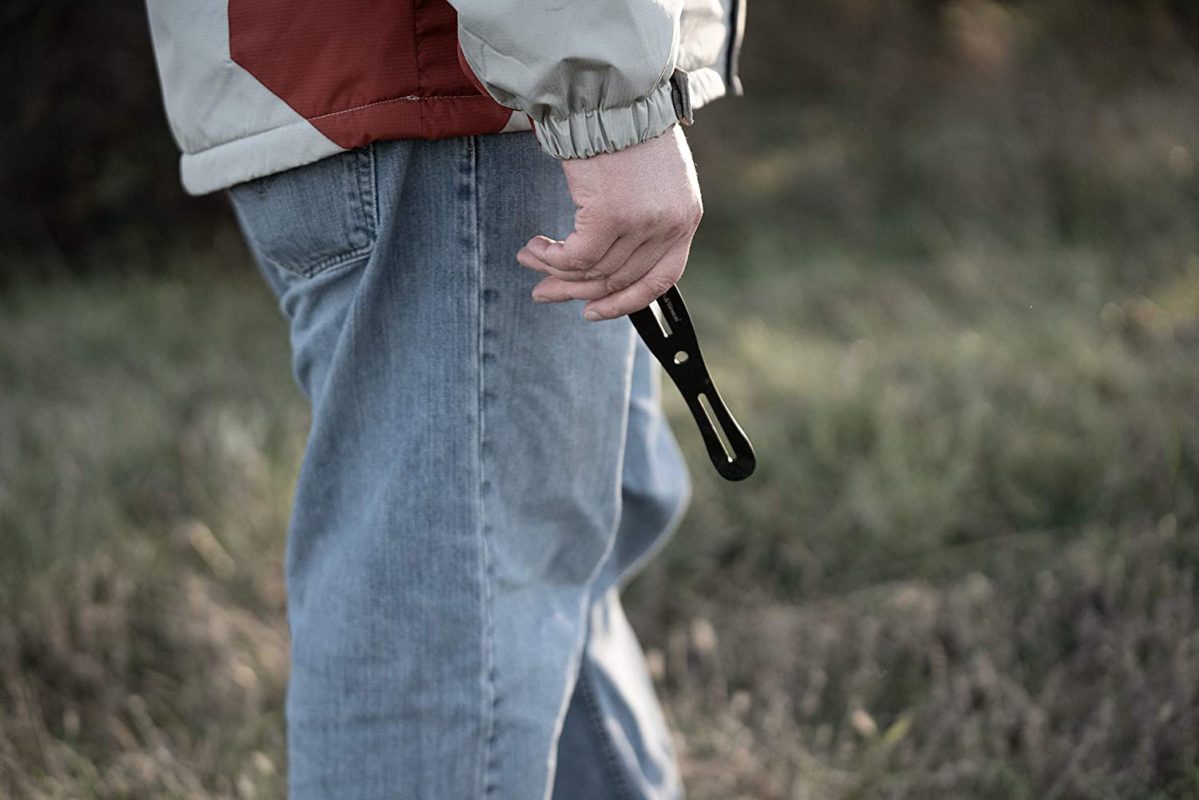
Throwing a knife With Full-spin
If your throw is powerful, and you are lowering the tips of your knives buried into your victim, then why not provide the full spin a try. As with the ¼ turn, you must change your distance from the victim. This time, you will go in an opposing way.
For instance, if you throw exactly from 12 feet on the half-spin throw, you necessitate doubling that for the full-spin so you are standing 24 feet from the target. Though, there is a twist. You must take the length of your arm into the record on this throw, therefore back up an arm’s length in enhancement to increasing your average distance.
At this point, run by your normal throwing plan till you hit the target correctly and your knife sticks consistently. As normal, you necessitate changing the many variables respectively.
The spin and a half, and two-spin throws
You can pull it out as far as you want. The game goes up to two spins if that is something in which you would like to compete. As with the full-spin throw, distance is your foremost variable with more running throws, followed by changes to your distance and throw strength. It’s suggested that you master the spins and physics of the throws before you attempt for pretty short game distances.
Determining how to throw knives goes well behind learning your stance, grip, and many throws. Throwing axes and tomahawks further fit under the umbrella of knife throwing further. There have been many books written concerning the physics required and procedures.
You will additionally find information online about making your throwing knives from traditional steak knives if you are a do-it-yourself sort of person. If game throwing is not your thing, but the execution is, you could be suited for the impalement arts which holds knife and Axe throwing.
Something to remember in combat situations
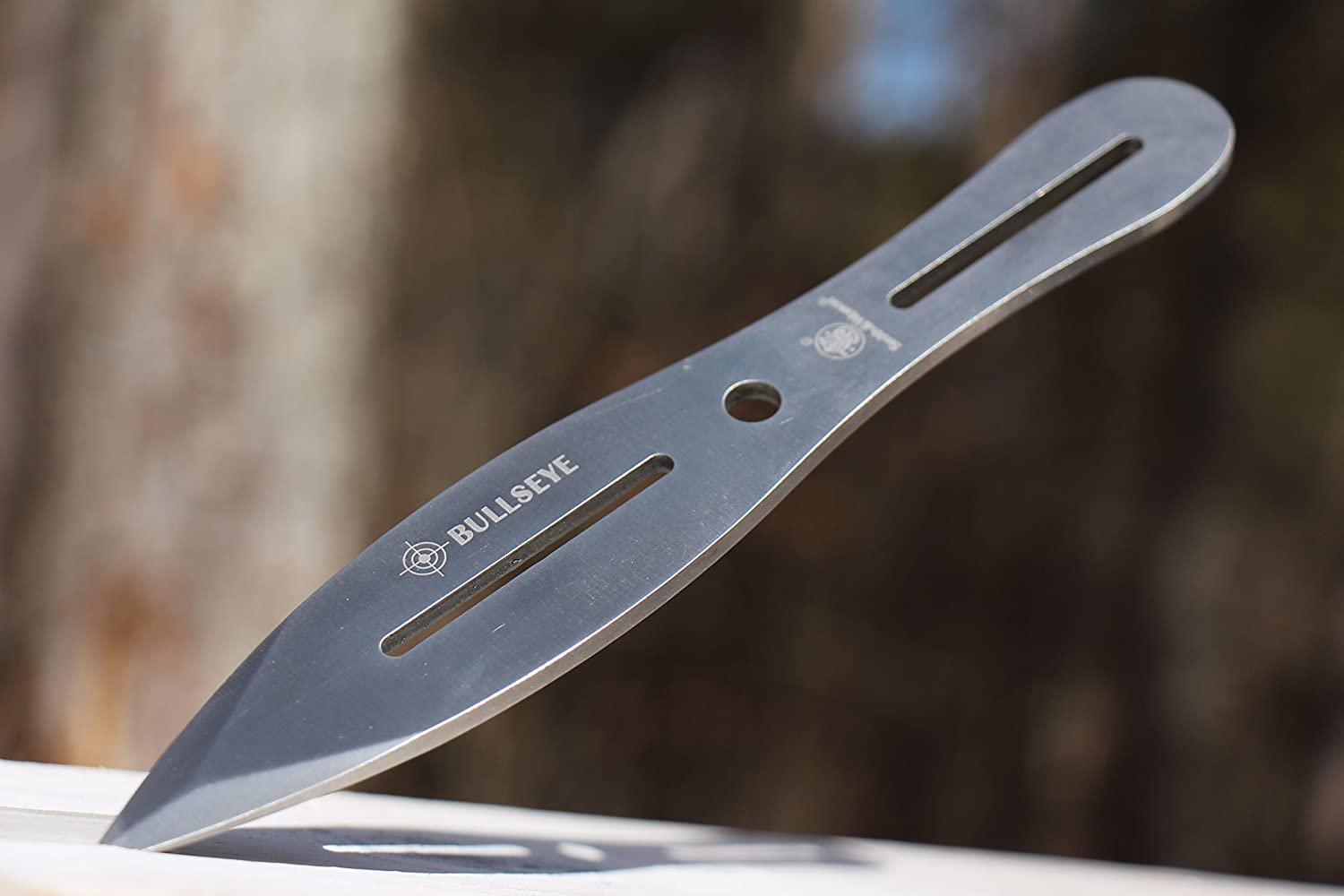
Something to remember in combat situations
Using a throwing knife in battle is the last option. It is the last measure to be considered after all other has abandoned to save a life. Some things you should nevermore do with your throwing knife in a battle situation:
- Throw your last knife assuming to have a chance to reclaim it. Hit your aim the initial time because no battle was ever stopped because you threw your last knife
- Make assured you have practiced to the degree that you infrequently miss your appointed target
- Throw your knife to start a fight. If you are going in to take out a patrol or defender, have more than your knives. They will!
There are limitations and increases to these common rules.
You never know when you might see yourself in a place including those up when throwing your knife was the just excellent outcome. This is where intuition and practice will take you an extended way. You should use your knife for the following:
- To protect a life
- Particularly in conditions where you necessitate to be withdrawn when others are starving or looking for you
- As a sign
- As a change
All of these things are ones that we hope nevermore happen, but knowing how to throw a throwing knife can be an added weapon in your arsenal just when you lack it most. Yet, when it becomes to battle, it is most satisfying to have a survival knife on you as they are strong and can cause a lot of damage.
Knife throwing runs and courses
If you desire to make your training time extra challenging, entertainment, and ninja-like, think of a run if you have time. Ideally, a run would be in a forested area where a path is previously placed. If walking is more extra your style, make a way out of it. Just make assured you are going when you practice. Here are 9 challenging throws to prepare on your course or run:
- Left of the path – You can throw at a head-high target set up on the left of the track
- Right of the path – identical thing, but on the right of the track
- Center of the path – You can also throw at a target in your way at a knee-high level as you are running via it
- Center of the path 2 – the identical thing, but make the target about 8 feet high
- Throw while jumping over an obstacle – A fallen tree is ideal
- Throw through an opening – Fix a tire, and throw at a chest-high point on the other side
- Throw from under a branch – Hit a chest-high target as you are moving below a branch
- Throw 180 – Hit a chest-high target while doing a 180-degree turn mid-air
- Throw around an obstacle – Hit a chest-high target while your intention is obscured
Be alert! These are high-level methods to support you sharpen your abilities in not just knife throwing but acts as well.
All in all, knife throwing is a fabulous art and entertainment sport. It is additionally excellent as nothing more than a backyard game. If you are thinking of taking up knife throwing, do your due care by training yourself and having the right tools.
Do not take yourself of taking the time to assure precise security procedures. If you train with friends, always make it an alcohol-free activity. Oughta hobby that changes to a survival skill might be useful one day. Most maximum of all, have a great time with it!
Editor’s Recommendations
- How To Mix Dough Without A Mixer
- How to use a dough whisk
- Dough Hook Alternative
- What Is A Flat Whisk Used For
- Why Do You Need Dough Whisk
- Why Every Baker Needs A Danish Dough Whisk
- Dutch vs Danish

